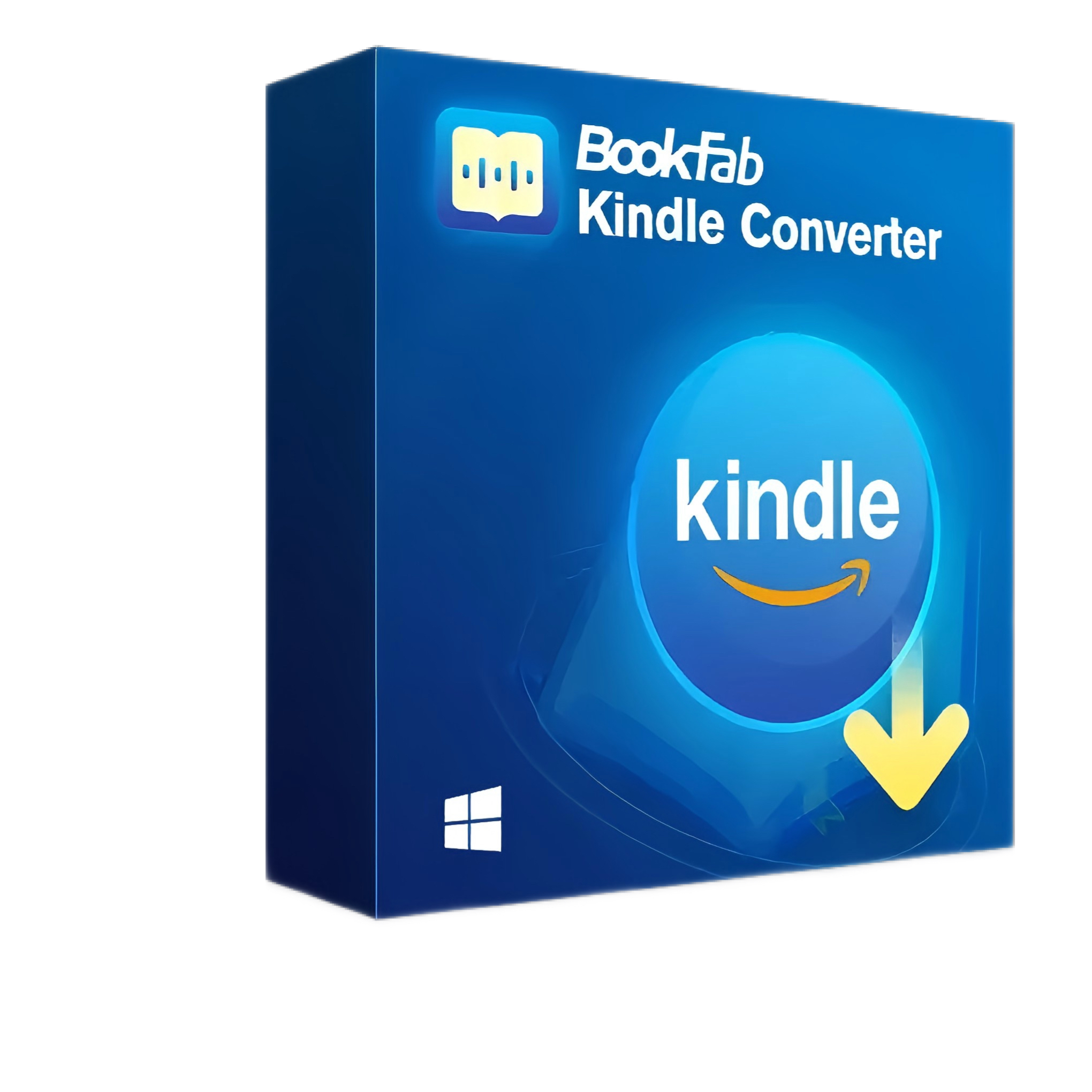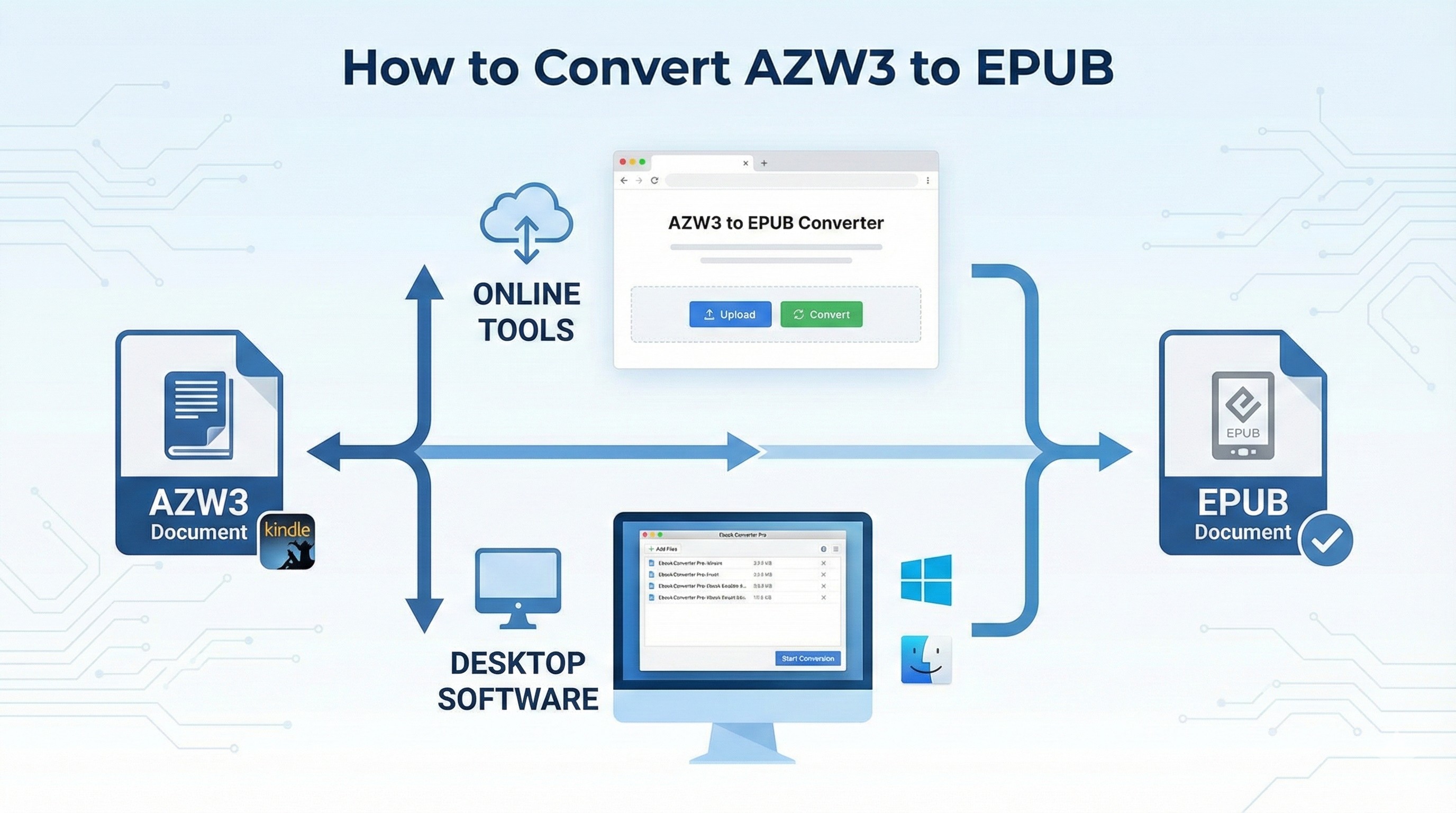How to Send Books to Kindle with Calibre: A Step-by-Step Guide in 2025
Summary:Still struggling with how to import books into your Kindle? This step-by-step guide on using Calibre to transfer books covers two methods: direct connection via USB cable and wireless delivery through email. It effortlessly solves your transfer problems, allowing you to quickly fill your Kindle library and start your reading journey at any time.
Table of Contents
If yo've built up a sizeable library of eBooks from different stores and websites, it's natural to want them all on your Kindle. You can move them there, but it isn't as simple as dropping any file onto the device. Kindle models are quite strict about the formats they accept and often won't read books bought outside Amazon's store. This guide shows two practical ways to send almost any book in your collection to your Kindle with Calibre.

Send Books from Calibre to Kindle via USB
Step 1: Install Calibre and Import Books
Download the latest version of Calibre for your computer's operating system from the official website, and follow the guide to install it.
Open Calibre and click "Add books", the leftmost button on the toolbar. In the window that appears, choose the books you want to send to your Kindle. You can select several titles at once. If you prefer, you can also drag and drop your book files directly into the Calibre window and they'll be added automatically.
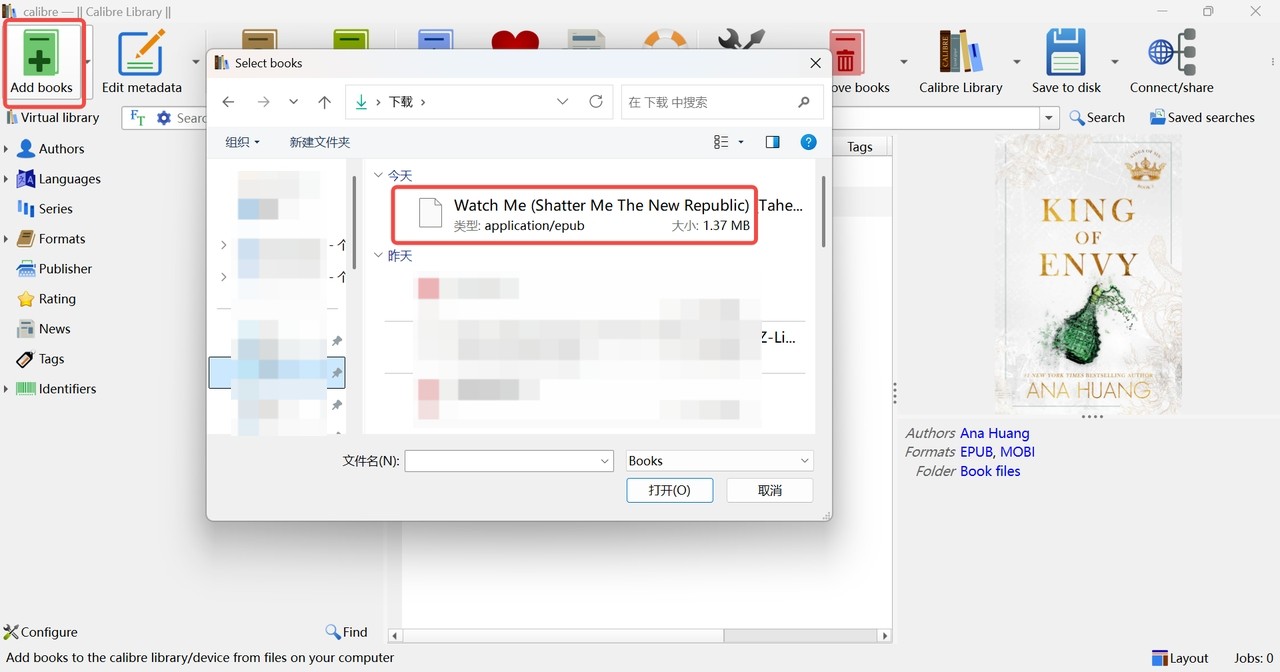
When the import is finished, Calibre pulls in the book's metadata, cover, and other available details.
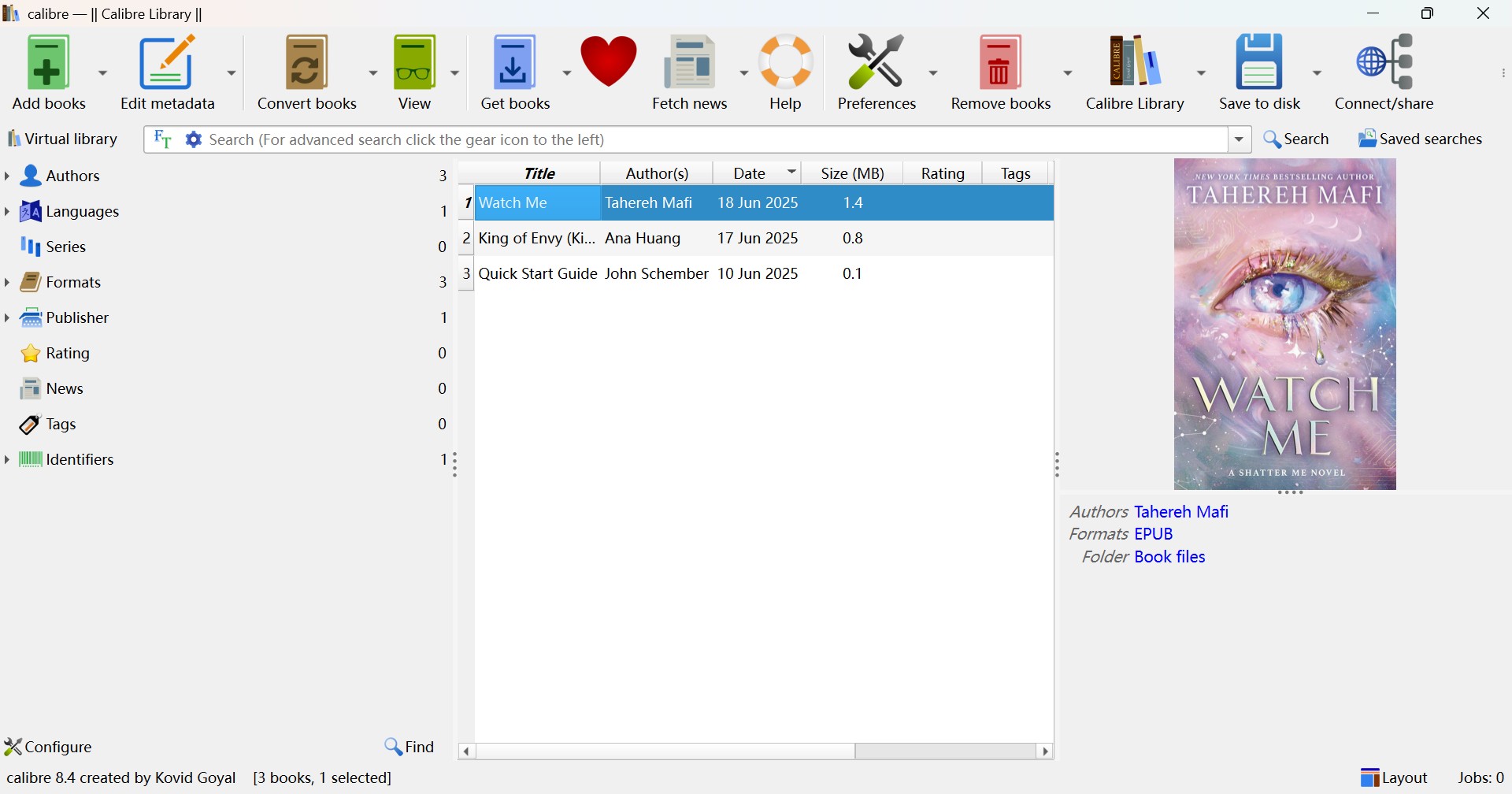
Step 2: Connect Kindle to Computer
Use a USB cable to connect your Kindle to computer. Calibre will automatically recognize your Kindle device, and you will see a column labelled "On Device" appear next to the book title column.
Step 3: Send Books from Calibre to Kindle via USB
Select one or more books, right-click, and choose "Send to Device" in the menu. Then click "Send to Main Memory."

If the books are already in MOBI or AZW3 format, the transfer starts right away.
If they're not in a Kindle-compatible format, Calibre will ask whether you want to convert them. A dialog box will appear asking if you want to convert the format. Click "Yes" to proceed. Calibre will first convert the book to MOBI format and then send it to your Kindle. If you want to check the task progress, click on "Jobs" in the bottom right corner of the interface.
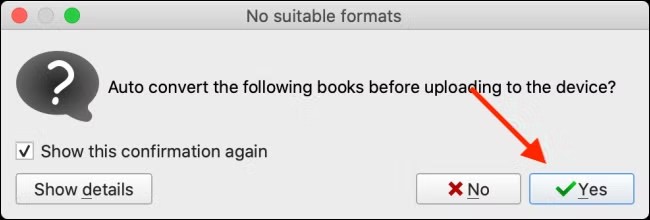
Step 4: Eject Your Kindle Device
Once the transfer finishes, click the "Device" button on the toolbar. Then, click on "Eject this device" from the drop-down menu. After that, you can unplug your Kindle from the computer.

Send Books from Calibre to Kindle via Email
Note: Starting August 2022, Kindle users will no longer be able to send MOBI (.mobi, .azw) files to Kindle library via email. Compatible formats sent via email now include EPUB. If you have no need to convert the format, you can directly use Amazon's official "Send to Kindle" service to transfer books to Kindle, which is more convenient and faster.
Although formats like PDF and TXT can be successfully transferred and read on Kindle, their display quality is inferior to that of EPUB. So, if you want to send books in other formats via email, you can first convert them to EPUB format and then transfer them with Calibre.
Step 1: Set Up "Share via Email" in Calibre
After adding books to Calibre (same as step 1 of the previous section). Then, click "Preferences" in the menu. In the "Preferences" interface, click "Sharing" and select "Share via Email".
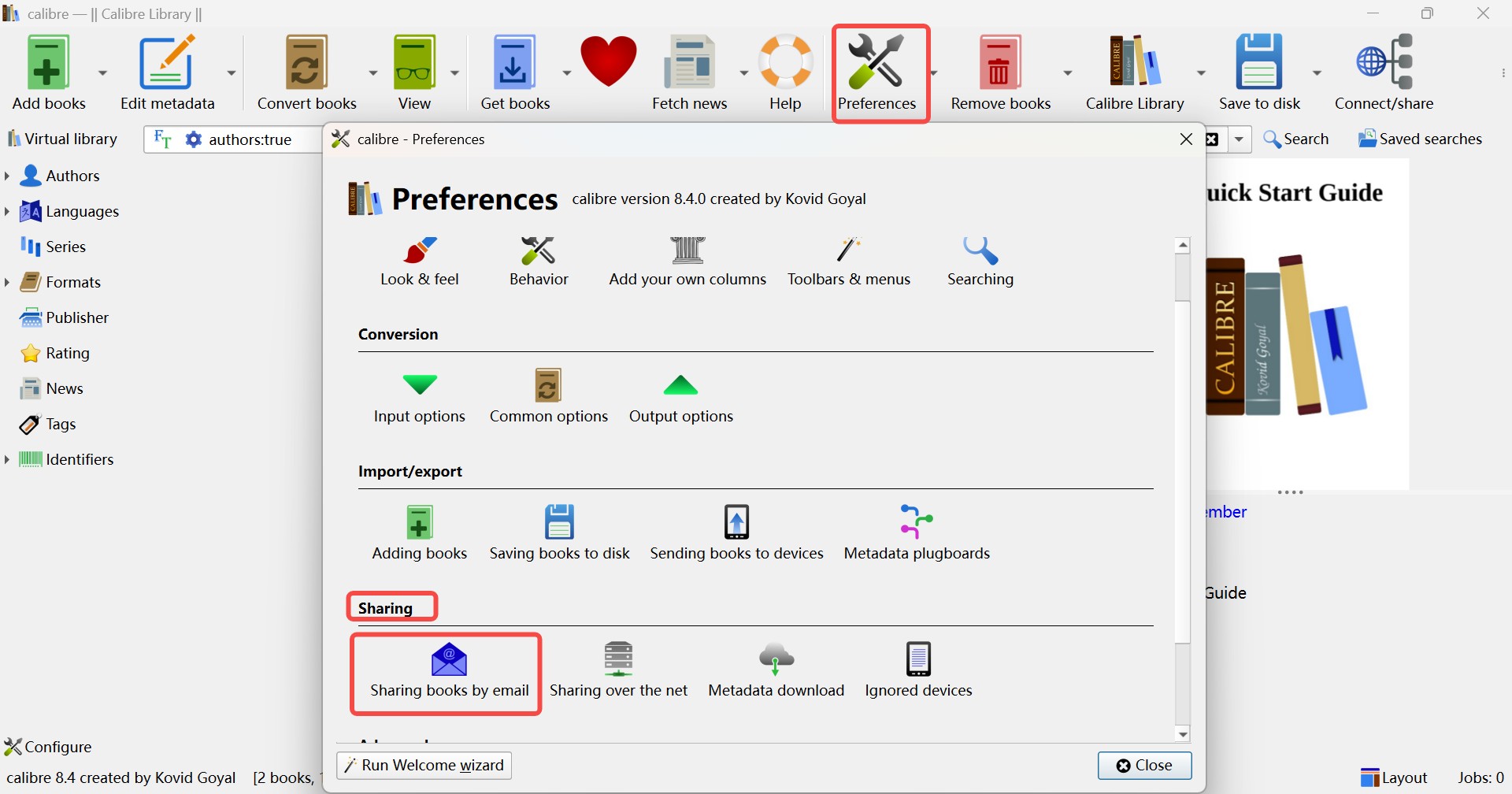
Step 2: Add Your Kindle Email Address
This email is your Kindle email, and you can find it in the personal account of the Kindle reader. Then, click "Add email" to add this address in Calibre and set it as the default. Make sure "Formats" is EPUB.
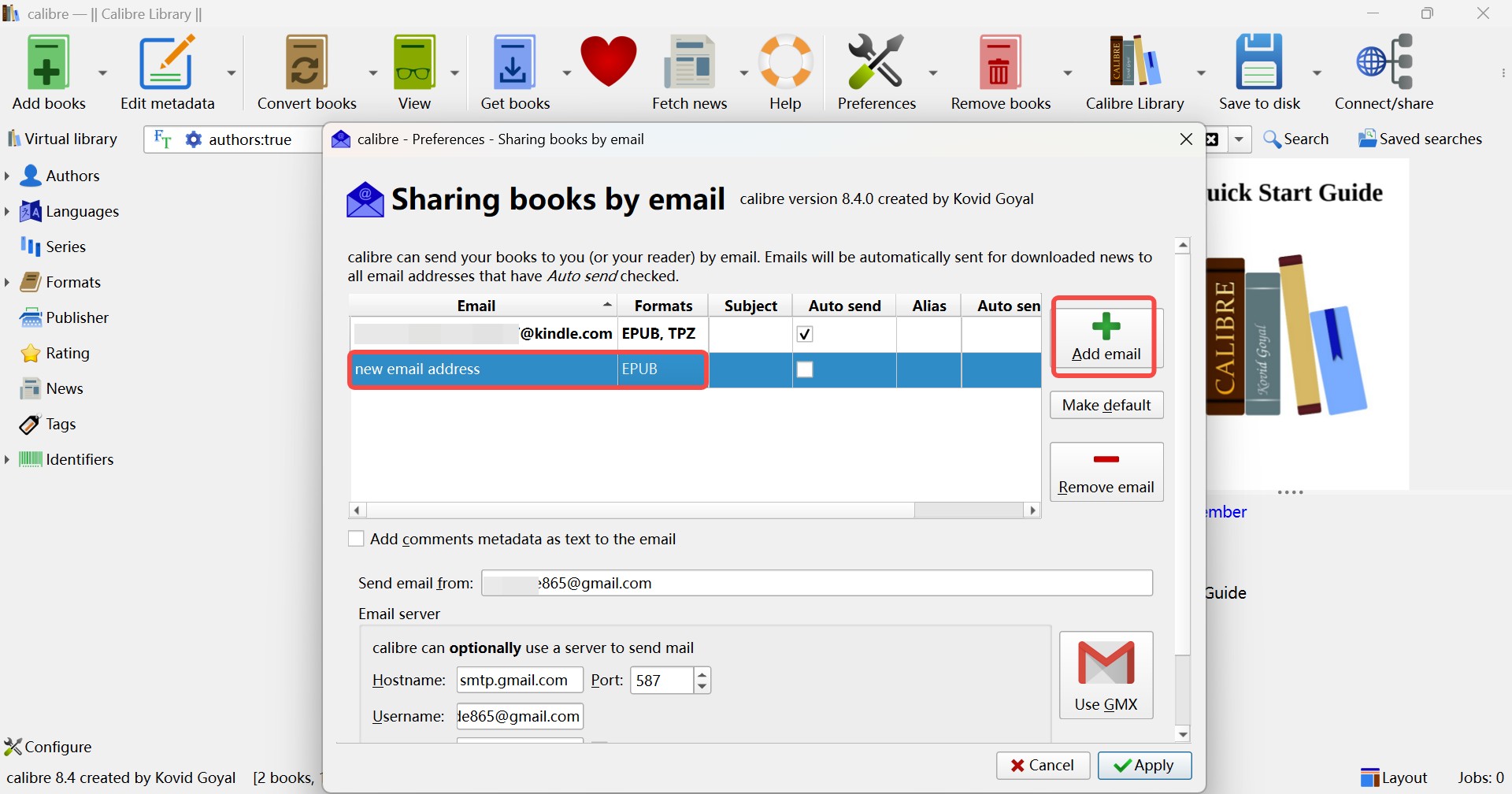
Step 3: Prepare Sender's Email Address
You can use any email. But different email domains should be set in different ways in "Email Server" section. Here's a demonstration using Gmail.
Step One: Authorize your sender's email address on Amazon
Go to amazon.com. On the right side of the navigation bar, find "Account & Lists", open the drop-down menu, and select "Content & Devices".

Click on "Preferences". Scroll down the page and select "Personal Document Settings", then locate "Approved Personal Document E-mail List". If your sender's email is not on the list, click on "Add a new e-mail address" to authorize it. After that, you can find your sender's email on the list, which means your email has been authorized and approved by Kindle.

Step Two: Enable POP3/IMAP/SMTP services on Gmail
Log in to your Gmail account, click the settings icon (gear icon) in the top-right corner, and select "See all settings".
Then, click the "Forwarding and POP/IMAP" tab. In the "POP download" section, select either "Enable POP for all mail (even mail that's already been downloaded)" or "Enable POP for mail that arrives from now on" to activate POP3 service. In the "IMAP access" section, select "Enable IMAP" to activate IMAP service. Then, click "Save Changes".

Step Three: Enable Two-Step Verification (Mandatory Precondition)
Log in to the Google Account Security Center.
Click "Security > Two-Step Verification", then follow the prompts to bind your mobile phone number (for receiving verification codes) and complete the activation of Two-Step Verification.
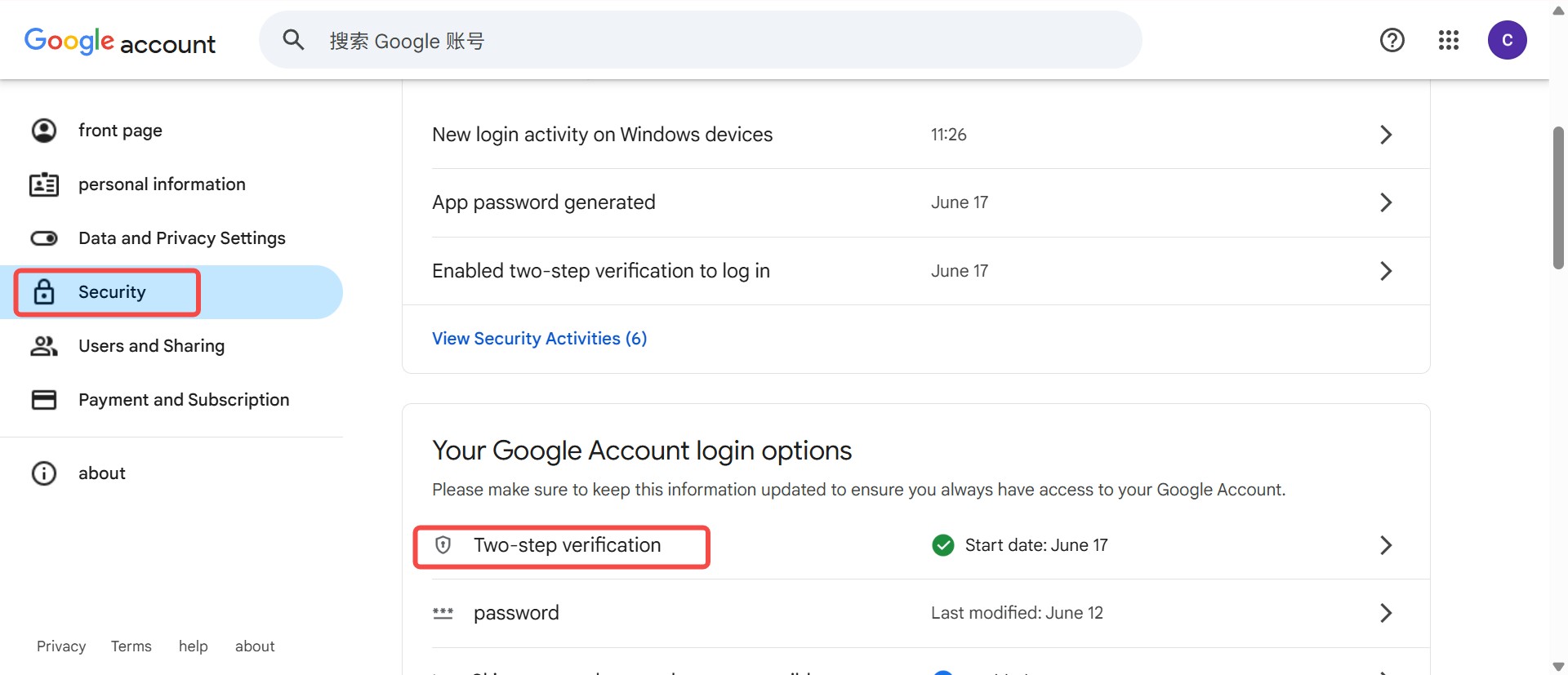
Step Four: Generate an App Password
Click "Security > App password generated". Enter a name (e.g., Calibre-Kindle) to identify the purpose.
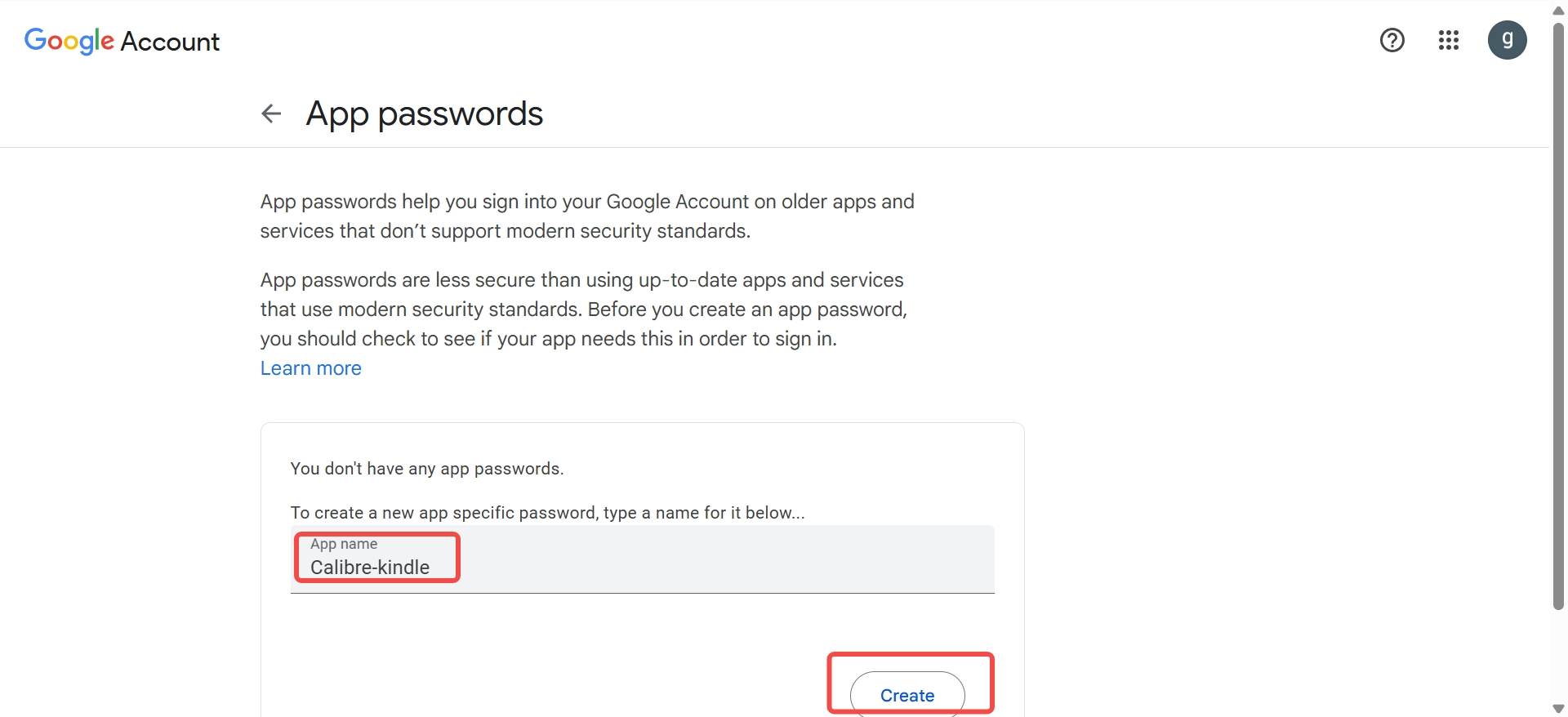
Click "Create". You will immediately get a 16-character app password like "abcd efgh ijkl mnop" (delete spaces when you use it). Then, copy and save it.
Step Five: Fill in the information about sender's email address
Fill in the email address, as well as the hostname, port, encryption type, email username and password in the corresponding fields. Taking Gmail as an example, the parameters are as follows:
- Hostname: smtp.gmail.com
- Port: 587
- Encryption: TLS
- Username: Enter your sender's email address
- Password: Input the 16-character app password generated earlier
Confirm that the information is filled in correctly and click "Test email" to check if the email can be sent successfully.

Step 4: Send Books from Calibre to Kindle Wirelessly
Close the "Preferences" interface. Now select the books you want to send, and choose "Connect / Share" in the menu bar. Then select "Email to ..." to send the books to the Kindle's receiving email address. Next, open the Kindle and connect to the network to receive the books. Now you can read these books on Kindle.
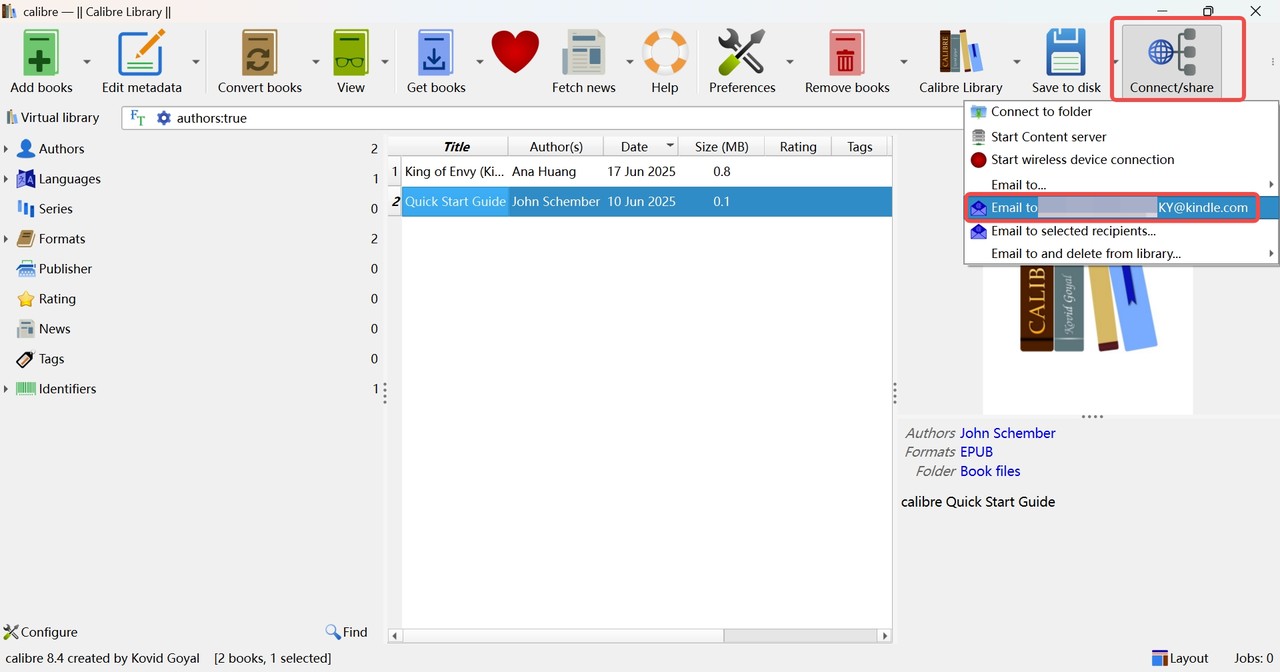
Note: Although the first three steps may take a long time, these settings only require a one-time setup. When transferring books next time, you could skip these steps.
Bonus: How to Transfer Kindle Books to Other Devices
After learning how to send books from Calibre to Kindle, are you wondering how to remove DRM from Kindle books and read them on other devices?
However, Kindle books are protected by Digital Rights Management (DRM) technology. This encryption creates a barrier for readers who want to access their Kindle library on non-Kindle devices such as Kobo. Therefore, if you want to transfer Kindle books to other devices, the fundamental step is to remove Kindle DRM and convert formats to a universally supported format like EPUB. Although Calibre can remove DRM with the DeDRM plugin for Calibre, increasingly strict protections mean many newer Kindle encryption schemes can no longer be handled. Here, we recommend using a more professional tool for decryption.
BookFab Kindle Converter [The Simplest Solution]
- Complete DRM removal for book ownership
- DRM-free format conversion for cross-device freedom
- Lightning-fast Kindle to EPUB or PDF conversion
- Audiobook creation with BookFab's TTS suite
- Active and ongoing updates
Guide on Transferring Kindle Books to Other Devices
Step 1: Get BookFab free download and launch it
Install BookFab on your computer and double-click the desktop icon to open it. In the left sidebar, click Kindle Converter, then hit the refresh icon to load the eBooks you've already downloaded in Kindle for PC.

Step 2: Select and parse your books
Before uploading your ebooks into the software, please ensure that you've installed Kindle for PC and downloaded your Kindle books to your computer.
Choose the Kindle eBooks you want to convert and click the decrypt button below. BookFab Kindle Converter will automatically analyze and decrypt the selected files. When the task finishes, the status next to each title will update.

Step 3: Download and transfer converted books
Once the decryption is complete, the DRM-free eBooks will appear on the list with their cover, and title. Click the folder icon to open the local directory where the converted ebooks are stored on your computer. From there, you can copy these files to other eReaders, phones, or tablets using a USB cable, or cloud storage.

Frequently Asked Questions
KFX, AZW3, and MOBI formats must be sideloaded via USB from a computer to the Kindle. When using email to transfer files, only EPUB format is supported. This is because Amazon automatically converts EPUB files to KFX format during the email transfer process. However, Amazon Cloud cannot convert AZW3, MOBI, or KFX to KFX—its conversion capability is limited to EPUB files. As a result, the Kindle email system only recognizes EPUB formats for this method of transfer.
Connect your Kindle to the computer via a USB cable. Calibre will detect your device and you can download books from it. However, Kindle books often have DRM protection, which could prevent you from converting or transferring them. If you encounter this issue, you may need to look into DRM removal tools such as BookFab Kindle Converter. It is suggested that you check your local copyright regulations before removing DRM.
Conclusion
Calibre is a powerful software that helps you manage, convert, and organize your digital library. This article demonstrates two methods to send books to Kindle using Calibre, which is also a practical workaround for the "how to get free books on Kindle" query. The USB method is reliable for direct transfers, and email approach brings opportunity with wireless convenience. In short, both methods enable eBook enthusiasts to manage their digital libraries and get beyond Kindle ecosystem limitations for a better reading experience.

